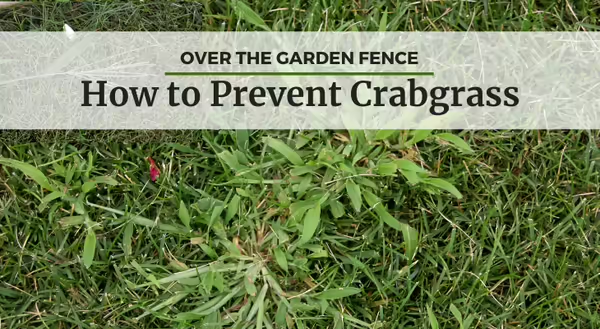
Now is the time to prevent crabgrass so you will not have to see it in the lawn later. Crabgrass like other “weeds” in the landscape is an opportunist. Crabgrass will take advantage of places in the lawn that are thin or have been damaged from the winter, such as the road salt on your parkway.
Crabgrass is an annual grassy weed that will compete well against our more desirable lawn grasses when it is established. It grows up and out, covering up and smothering your regular lawn grass. As a germinated seedling, crabgrass can be pulled out very easily… if only you had a few seedlings, which would be surprising! Here are some crabgrass facts to amaze your friends and family with:
- Crabgrass can produce upwards of 150,000 seeds in a single season.
- Seeds produced remain viable in the soil for three years.
- Crabgrass can produce anywhere from a low of 150 to a high of 700 tillers (that is where the smothering comes in).
Just wait, there’s more:
- Crabgrass will germinate when soil temperatures are greater than 55 to 60 degrees F for seven to 10 consecutive days.
- Crabgrass will continue to germinate until soil temperatures reach 95 degrees.
Now that you’ve shared all this crabgrass trivia, your friends and family are all wondering what is the best time to apply that crabgrass preventer?
For northern Illinois, late April to early May is the suggested time for applying a preemergence crabgrass herbicide. What you want from your preventer is an adequate length of effectiveness and that can be a function of when it was put down. Too early and you do get initial control, but you may lose later season control. Put down too late, just the opposite, the first flush of crabgrass seed germinates to bother us while later germination is suppressed. You may have missed out on some crabgrass control, yet other grassy weeds germinating at soil temperatures of 60 degrees and higher and will be managed.
For those that would like another strategy that does not include a preventer, start chanting the following mantra: “mow high, mow often, with a sharp mower blade.” The higher the grass blade, the more it shades the soil, which prevents crabgrass seed from germinating. That also will keep the soil cooler longer, which delays any crabgrass seed from wanting to sprout. Put the mower on the sidewalk, make sure it is level all around and measure from the sidewalk to the bottom of deck side. The mower blade sits just above that edge. Just setting the deck up one notch can make a big difference! The springtime flush of growth will let you know how often you need to mow. The goal is to remove no more that on-third of the grass blade at any mowing. Taking away more than one-third will set back the grass plant temporarily, allowing for that opportunistic weed to step up.
Why the sharp mower blade? Blades should be sharp to cut the grass blade rather than tear and shred it. This will improve the look of the lawn for bragging rights status and improve the heath of the grass plant too. If you are using a gasoline powered mower, a sharp blade means less pollution since the engine is not working as hard. Learn more at https://go.illinois.edu/CrabGrassManagement
About the author: Richard Hentschel’s expertise extends across several subject areas with specialties in lawn care, fruit tree production, woody ornamentals, and home and community gardening. During his 45-year career in horticulture and agriculture, Hentschel became a well-known and respected expert for commercial and homeowner audiences, industry organizations, and media. He retired from University of Illinois Extension in April 2022 with nearly 30 years of service as a Horticulture Specialist and Educator in northern Illinois.